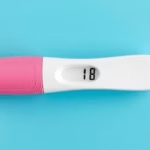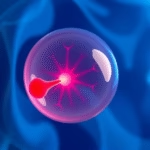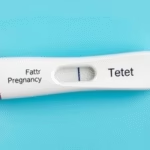Understanding Ovulation Bleeding
In this article, we will be talking about ovulation bleeding and implantation. Ovulation bleeding is a light spotting that can occur midway through a woman’s menstrual cycle, around the time of ovulation. This is a natural phenomenon caused by the fluctuation of hormones, specifically the drop in estrogen levels that happens right after ovulation. It can be seen as a minor bleed or brownish discharge.
In contrast, implantation bleeding occurs when a fertilized egg attaches itself to the lining of the uterus. This typically happens 6 to 12 days after conception and can be mistaken for a light menstrual period. Both occurrences, though they can seem alarming, are often normal and not a cause for concern. It is important for individuals to differentiate between the two, as they can signify different stages in the menstrual cycle or pregnancy. Educating oneself on these topics can lead to better understanding and management of reproductive health.
Recognizing the Symptoms of Ovulation Bleeding
Recognizing the symptoms of ovulation bleeding can be crucial for women tracking their menstrual cycles. Some symptoms may include:
Ovulation bleeding generally occurs around the midpoint of a regular menstrual cycle, typically between days 10 and 14. Women can track their cycles to pinpoint ovulation bleeding. Monitoring changes can help confirm whether ovulation or another event is occurring.
Key Differences Between Ovulation Bleeding and Menstrual Flow
Many women often confuse ovulation bleeding with menstrual flow. Understanding the key distinctions can clarify these two important events:
The differences are essential as they can influence how women perceive their menstrual health. Properly recognizing flow types supports reproductive health management and timely medical consultations if needed.
When Does Implantation Bleeding Occur?
Implantation bleeding generally occurs 6 to 12 days after fertilization. Timing is key to distinguishing it from menstrual bleeding.
Monitor symptoms closely during this timeframe as other early pregnancy indicators may present, including breast tenderness or nausea. If there’s a possibility of pregnancy, taking a test might be advisable after the expected period date.
Understanding the Hormonal Changes Involved
Hormonal fluctuations are essential to understanding ovulation and implantation bleeding.
Understanding these hormonal trends can help women anticipate changes to their cycles and recognize what is typical for their bodies. Tracking hormonal changes through basal body temperature can also aid in understanding reproductive cycles better.
The Role of Stress and Lifestyle Factors
Stress and lifestyle factors can significantly impact menstrual health.
Adopting a healthier lifestyle—including regular exercise, adequate hydration, and balanced nutrition—can help maintain menstrual regularity. Being aware of mental health and managing stress are equally crucial for reproductive health.
When to Consult a Healthcare Professional
If bleeding occurs unexpectedly or if symptoms are alarming, consulting a healthcare professional is wise.
Early engagement with healthcare can help address underlying issues or conditions affecting menstrual health, ensuring that any concerns are effectively managed.
Final Thoughts
Understanding the differences and signs associated with ovulation bleeding and implantation is pivotal for women seeking to manage their reproductive health. Recognizing spotting during the menstrual cycle can help women track their ovulation and assess potential pregnancy symptoms effectively. Symptoms can guide women in determining whether they are experiencing ovulation or a sign of implantation, and ultimately, awareness can lead to better decision-making regarding health and lifestyle.
Tracking cycles, hormonal changes, and symptoms can empower women to understand their bodies better. Consultation with healthcare providers can enhance understanding and facilitate management of any concerns. Women should feel empowered to ask questions and seek clarity on their health journey. Overall, being informed opens pathways to effective reproductive health management.
Frequently Asked Questions
- What is ovulation bleeding?
Ovulation bleeding is light spotting that occurs during the ovulation phase of the menstrual cycle. It is typically pink or brown and lasts a few hours to a day or two. - How can I tell the difference between implantation bleeding and my period?
Implantation bleeding is usually lighter, shorter in duration, and occurs a few days before your expected period. Menstrual flow tends to be heavier and lasts longer. - Is it normal to experience ovulation bleeding regularly?
Yes, many women experience ovulation bleeding as a normal part of their menstrual cycle. It can vary widely in frequency and intensity. - Should I see a doctor if I experience unusual bleeding?
If you experience heavy bleeding, severe pain, or bleeding that is out of the norm, it is advisable to consult a healthcare professional. - Can lifestyle changes affect bleeding patterns?
Yes, stress, diet, exercise, and overall health can influence menstrual cycles and potentially affect bleeding patterns.
Further Reading
What Type of Psychotherapy Is Best for Anxiety?







